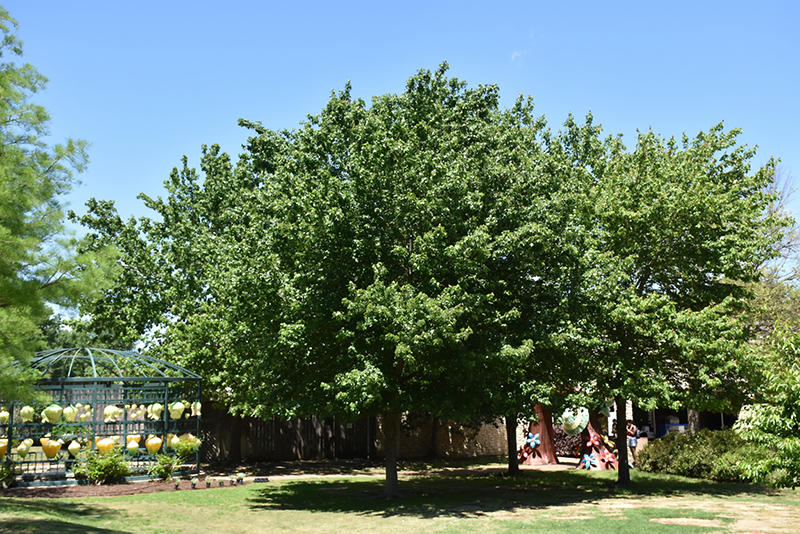>> Home
Drummond Red Maple
Acer rubrum var. drummondii
Height: 50 feet
Spread: 40 feet
Sunlight:
![]()
Hardiness Zone: 6
Other Names: Drummond's Maple, Swamp Maple, Scarlet Maple
Description:
A very attractive shade tree with 3 to 5 lobed green leaves that have silvery, fuzzy undersides; prefers moist, swampy sites, not as cold hardy as other A. rubrum varieties; intolerant of alkaline soils; makes a great accent or street tree
Ornamental Features
Drummond Red Maple has attractive green foliage with white undersides which emerges red in spring on a tree with an oval habit of growth. The fuzzy lobed palmate leaves are highly ornamental and turn outstanding shades of red and yellow in the fall. It is clothed in stunning clusters of red flowers along the branches from late winter to early spring before the leaves. It produces red samaras in mid spring. The fruit can be messy if allowed to drop on the lawn or walkways, and may require occasional clean-up. The furrowed silver bark and brick red branches add an interesting dimension to the landscape.
Landscape Attributes
Drummond Red Maple is a deciduous tree with a shapely oval form. Its average texture blends into the landscape, but can be balanced by one or two finer or coarser trees or shrubs for an effective composition.
This is a relatively low maintenance tree, and should only be pruned in summer after the leaves have fully developed, as it may 'bleed' sap if pruned in late winter or early spring. It has no significant negative characteristics.
Drummond Red Maple is recommended for the following landscape applications;
- Accent
- Shade
Planting & Growing
Drummond Red Maple will grow to be about 50 feet tall at maturity, with a spread of 40 feet. It has a high canopy with a typical clearance of 7 feet from the ground, and should not be planted underneath power lines. As it matures, the lower branches of this tree can be strategically removed to create a high enough canopy to support unobstructed human traffic underneath. It grows at a medium rate, and under ideal conditions can be expected to live for 80 years or more.
This tree should only be grown in full sunlight. It is quite adaptable, prefering to grow in average to wet conditions, and will even tolerate some standing water. It may require supplemental watering during periods of drought or extended heat. It is not particular as to soil type, but has a definite preference for acidic soils, and is subject to chlorosis (yellowing) of the foliage in alkaline soils. It is highly tolerant of urban pollution and will even thrive in inner city environments. This species is native to parts of North America.
